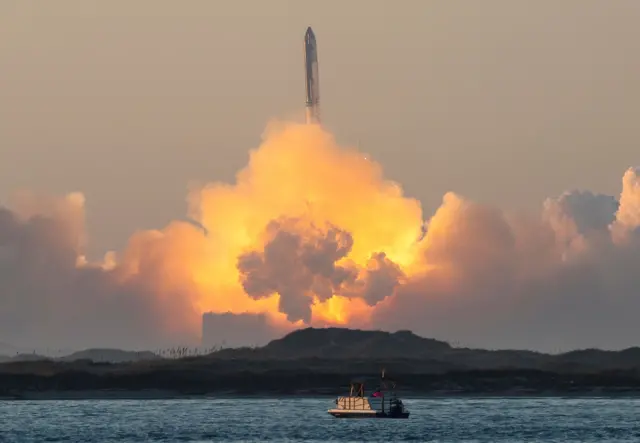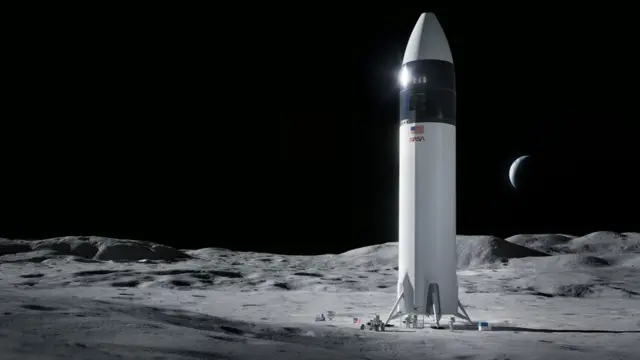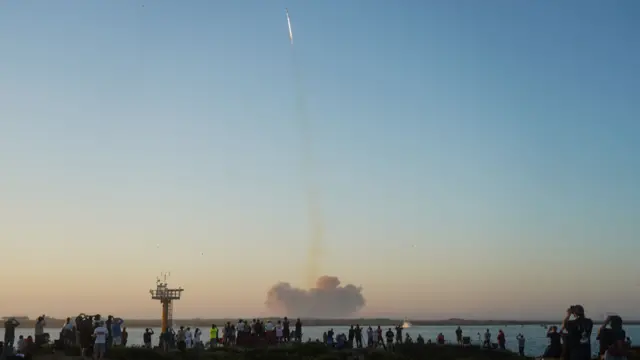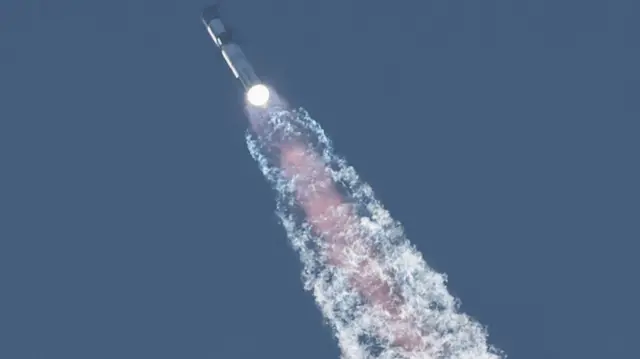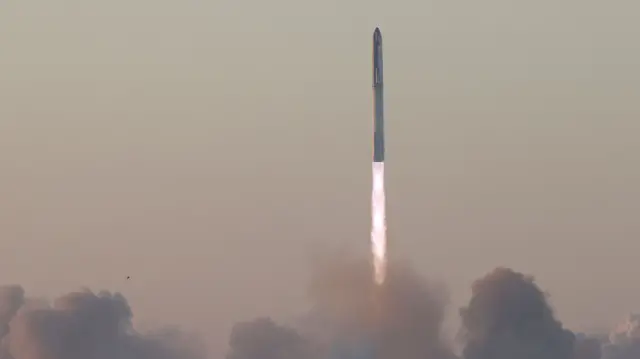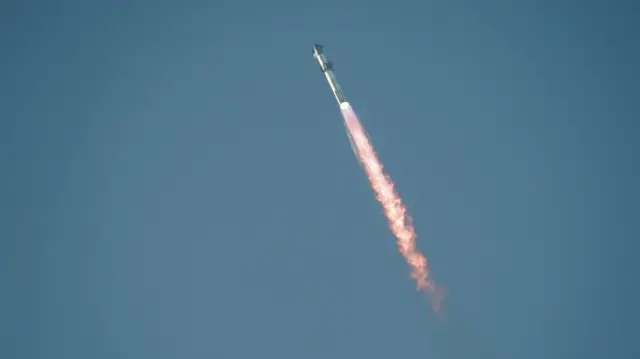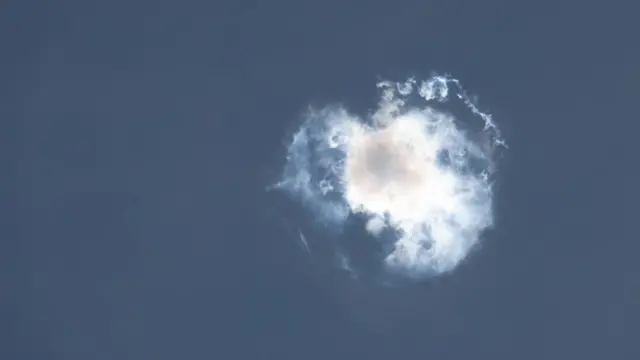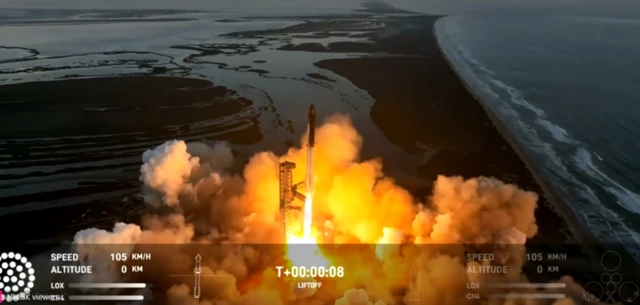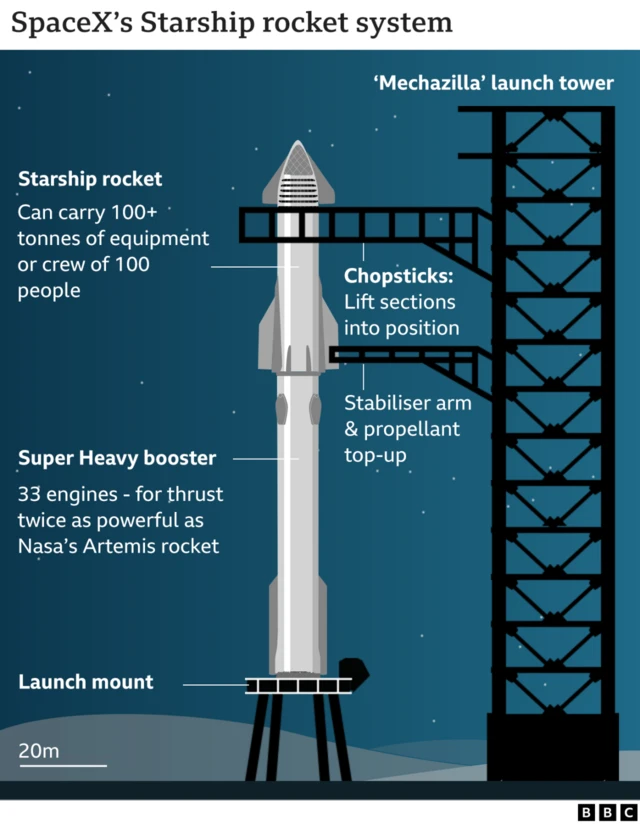Starship goes further despite technical difficultiespublished at 15:39 GMT 18 November 2023
 Marita Moloney
Marita Moloney
Live reporter
Mission control at Starbase will likely be still coming back down to Earth after what SpaceX hailed as an exciting launch of its uncrewed spacecraft Starship.
The company hopes Starship will transform the economics of space, with the eventual goal to build a spacecraft that can take people and cargo back to the Moon later this decade - and ultimately to Mars.
That dream is still alive for owner Elon Musk.
This second test flight went further and higher than the maiden launch in April, but with some technical problems persisting, including the booster exploding and contact being lost with the upper-stage Ship eight minutes in.
"If SpaceX engineers can make Starship work as designed, it will be revolutionary," our science correspondent says, and engineers will use today's test to continue working towards SpaceX's "multiplanetary" goal.
Today's coverage was brought to you by our colleagues in the Science team Jonathan Amos and Rebecca Morelle, as well as Sam Hancock and myself.
Want to learn more? You can read or watch how today's launch unfolded, as well as delving deeper into everything you need to know about Starship. Thanks for joining us.


